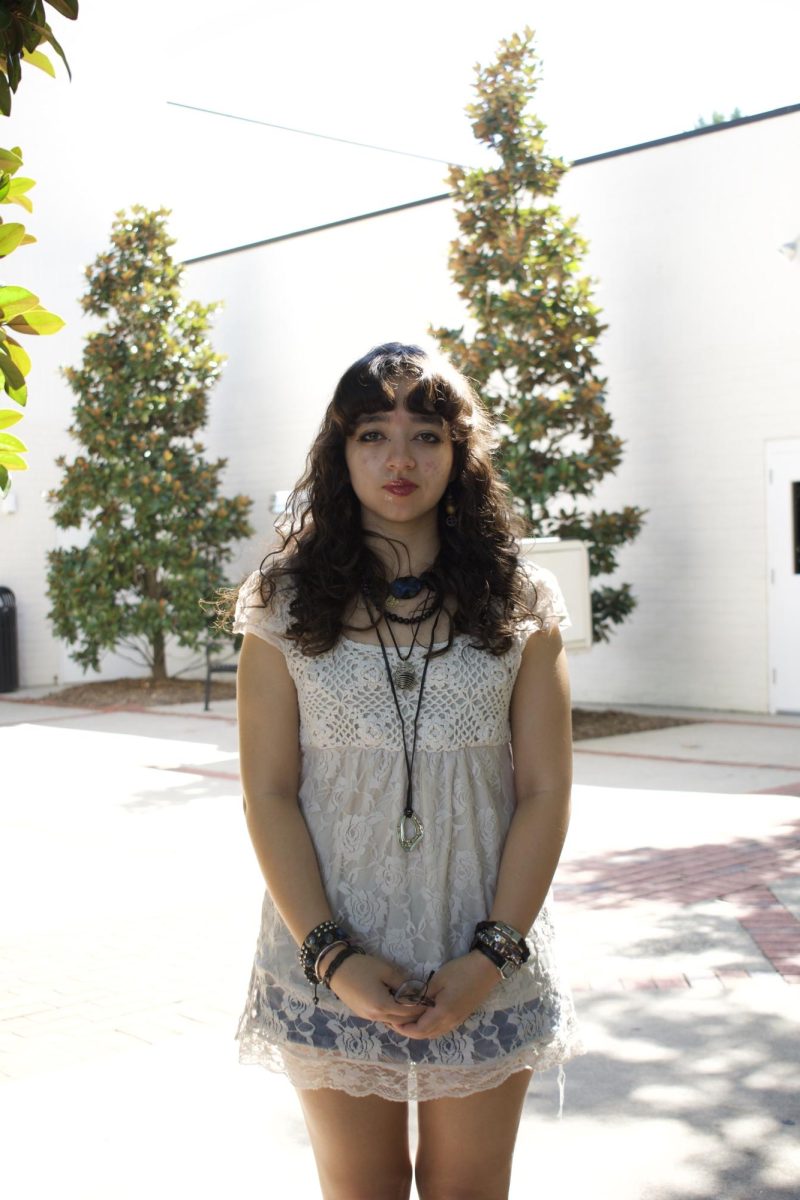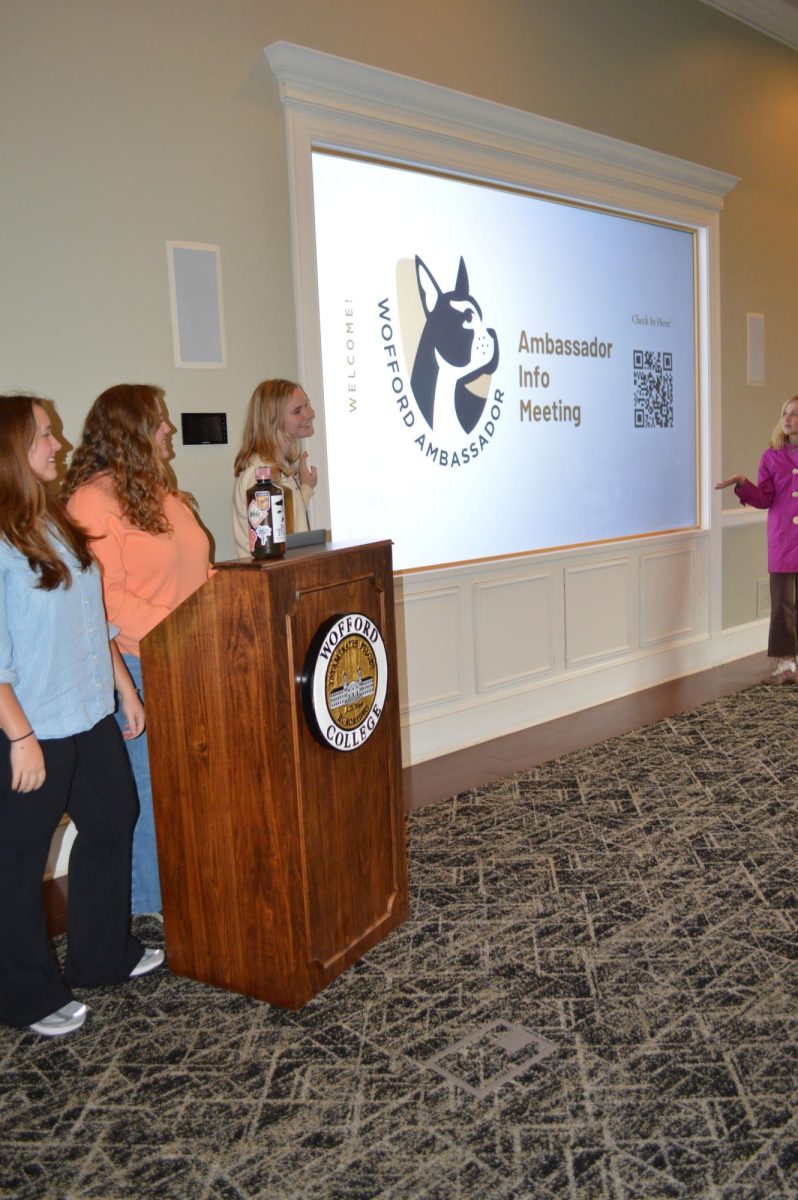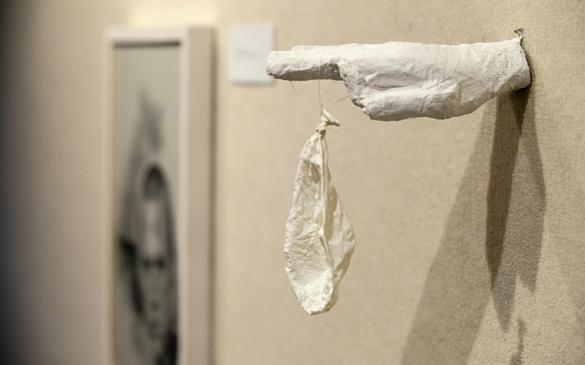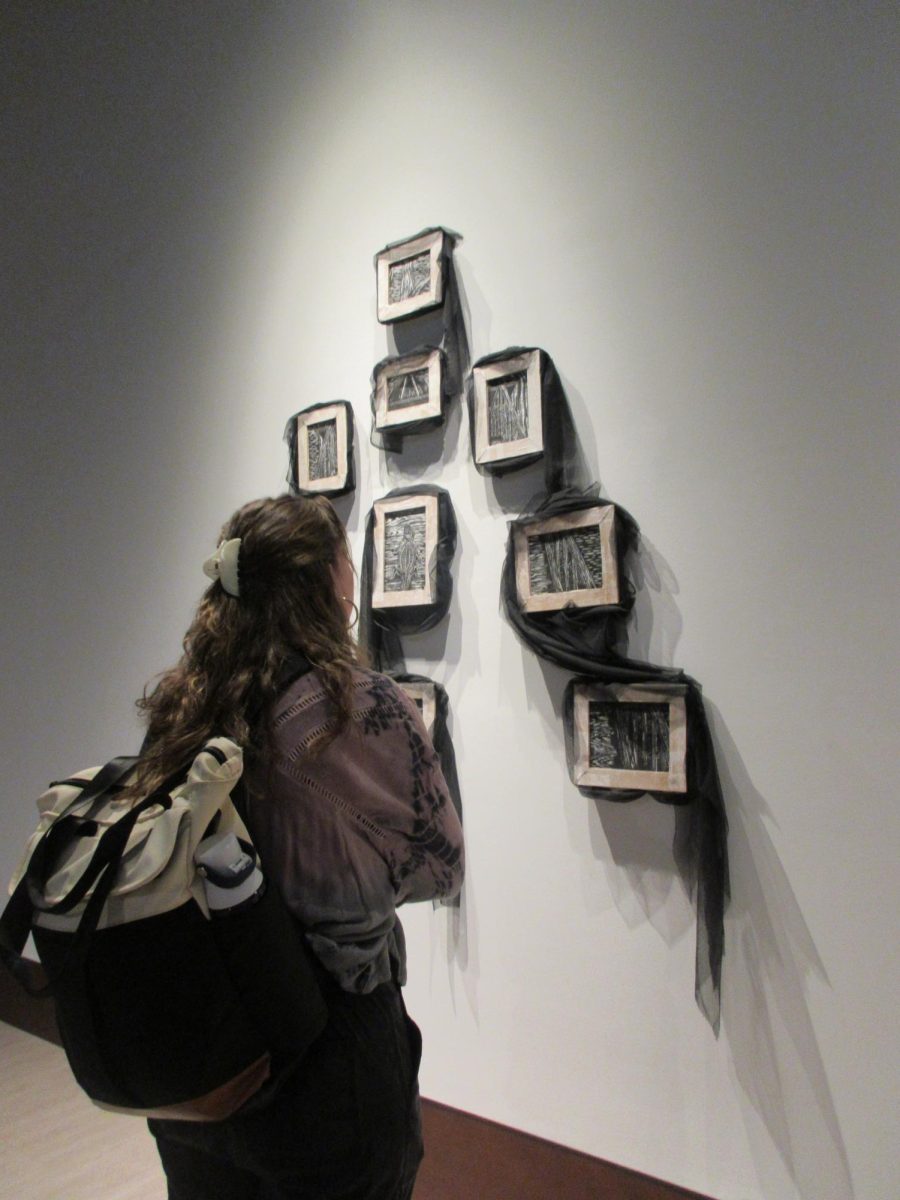By: Sarah Madden, Senior Writer
“I want to show the students, faculty and any visitors that a woman did all this – a disabled woman,” says Jessica Elaine Blinkhorn, surrounded by her drawings, sculptures and dozens of balloons drifting along the ceiling of Wofford College’s Martha Cloud Chapman Gallery.
Blinkhorn’s exhibition, Ephemeral Flights, contains images of balloons, the human body in many forms and plaster-gauze hands that sign various words, including “ephemeral” and “form” using American Sign Language fingerspelling.
The exhibit — on display as part of Wofford College’s National Women’s History Month celebration — will be up until April 5, 2016. The artist’s talk and reception will take place on March 9, 4-6 p.m. in the Martha Cloud Chapman Gallery. An artist lecture will take place on March 10, at 4 p.m. in the Olin Teaching Theater. These events are free and open to the public.
“I’m a storyteller. In my shows, there’s always a hint of my personal life. The hands, for instance, represent not only sign language, but also the natural evolution of a person’s hand,” she says. “[The] plaster gauze… is not an archival material, so they will deteriorate over time. The entire show is meant to be ephemeral – that’s why you see these balloons drifting up and down.”
These ceiling balloons have already fallen, but others remain tied to the plaster sculptures of hands. Blinkhorn explains that the hands help her tie disability and gender together.
“I feel that individuals who are living with disabilities or coming from the disability community, as well as individuals from the LGBT community, are the most underrepresented minority groups right now. The show is basically a marriage of LGBTQIF and disability,” says Blinkhorn.
Balloons, which can be found throughout the exhibit on paper, on the sculptures and on the ceiling, are an important part of Blinkhorn’s storytelling.
“They stand in as a metaphor for life, if you will. Like a child, [a new balloon], is shiny, makes a lot of noise, and it bounces, and you think it goes on forever. But as you get older, the illusion of the balloon that you knew changes. It, too, becomes ephemeral. That balloon eventually pops. It loses its luster, it falls to the ground slowly. A lot of my inspiration comes from the balloon.”
Blinkhorn also says that the balloons speak to sexuality.
“Many of the individuals who are depicted in this show are from the LGBTQIF community, and you’ll notice there is a pairing of pink and blue balloons, to kind of keep you guessing as to what their sexuality could be… the statement is that it doesn’t matter,” she says.
While Blinkhorn draws inspiration from various artists – mostly female – she also finds inspiration in the people around her. The people represented in her drawings are often repeated, she says, and they are dominant figures in her life that she holds in her own “balloon.”
When asked to identify one of her favorite pieces in the show, Blinkhorn points to a triptych – three 2”x3” portraits stacked on the wall. The first shows someone with amputated limbs. The second depicts scoliosis.
“The third is someone with Spinal Muscular Atrophy, which is the disease I have,” she adds. “I like using threes because my brother, my sister and I were all three born with SMA, a form of muscular dystrophy.”
Blinkhorn survives both of her siblings.
Another favorite is a portrait of her late sister, Erica.
“She’s in the foreground, lying under a tree, and in the background there is a dead tree with three balloons tethered to it. Two balloons, one purple and one yellow, are flying free. The balloons that are tied to the tree are black and white – this represents the coldness in death but the freedom as well.”
Blinkhorn says that for the most part, she wants the audience to use the images and the given information to make their own conclusions, though there are some themes that she hopes will not need translation.
“Basically, I want people to take from this show that life is fleeting, life is short, and that these bodies we live in are going to die… they’re going to fade away and cease to exist.”
As a disabled woman in a power wheelchair, Blinkhorn emphasizes the hope in this reality.
“It doesn’t matter what they look like. What matters is what’s cased inside them – that energy that they have inside. If anything, I want to convey an acknowledgement of difference, appreciation of self, appreciation of others and a common respect for humanity.”
For Ephemeral Flights, Blinkhorn has literally inserted herself into her own show.
“I cut my hair off for the show… I literally cut my hair and put it on the wall. It’s just life.”





























